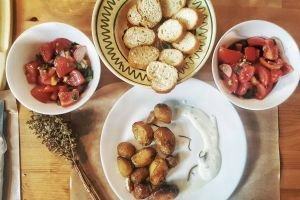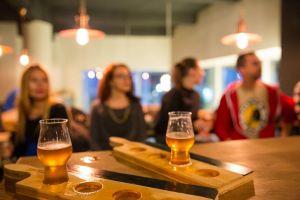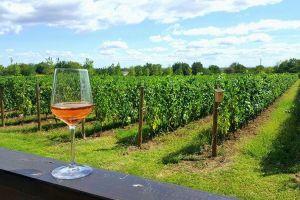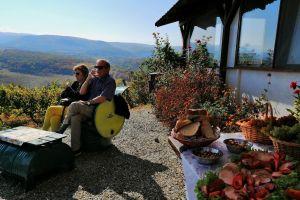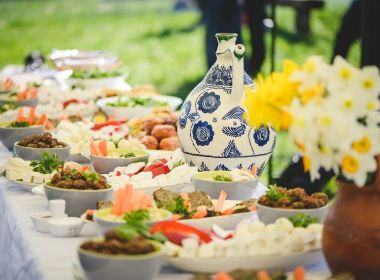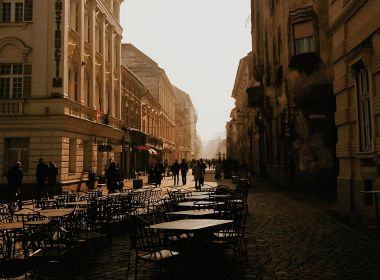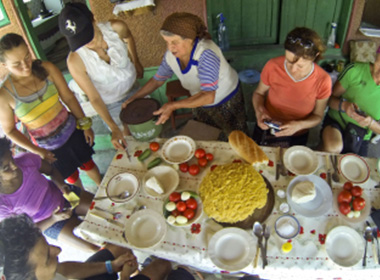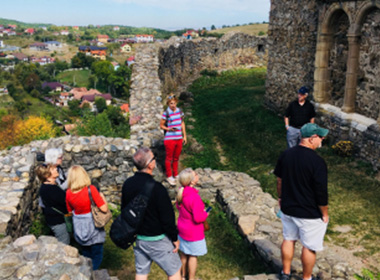What is Romanian food like? What are some traditional Romanian dishes you should try when visiting our country? What is Romanian cuisine known for and how can you eat like a local when you’re visiting our country? Let me tell you – or better yet, show you!
Romanian cuisine is best described through its hearty, rich-in-flavour dishes made from healthy, home-made, free-range, hand-to-mouth organic products and ingredients. These tasty dishes are today one of the main reasons why Romania is famous worldwide. They are a perfect reflection of our agrarian roots, rich and fertile geography, complicated history and influences from neighbouring cuisines such as Turkish, Germanic, Hungarian, Greek and Slavic.
One important aspect: in rural parts of Romania, Western (EU) food standards, industrialized farming, chemical fertilisers and GMOs hasn’t (yet) robbed the taste of tomatoes, chicken meat or strawberries. There are lots of small farmers who practice traditional agriculture - even if it's not economically advantageous and is very labour intensive. Supporting them on our tours is part of our mission.
Just 35 years ago Romania was still part of the communist block of countries (not the Soviet Union, mind you!) which means that:
- hypermarkets, 'fast food' concepts and international dishes such as pizza or burgers, were unheard of
- most of our vegetables, fruits and animal products were 100% natural, home-made
- authentic Romanian dishes and traditional recipes were very well preserved
Though things are slowly changing today, in countryside areas you can still experience the authentic and delicious Romanian traditional food and notice the deep sense of appreciation and respect locals have for their land or backyard garden, domesticated animals and natural farming processes.
You'll also be surprised to discover that Romanians are among the most hospitable and welcoming people you'll ever meet! Food, cooking and sharing a meal with friends, family and guests is an essential ‘ingredient’ in Romanian culture and everyday life. We Romanians would never miss a chance to prepare a feast with the best, locally-sourced ingredients and water everything down with Romanian wines and homemade tuica because we just love eating, drinking and spending hours around the dinner table!
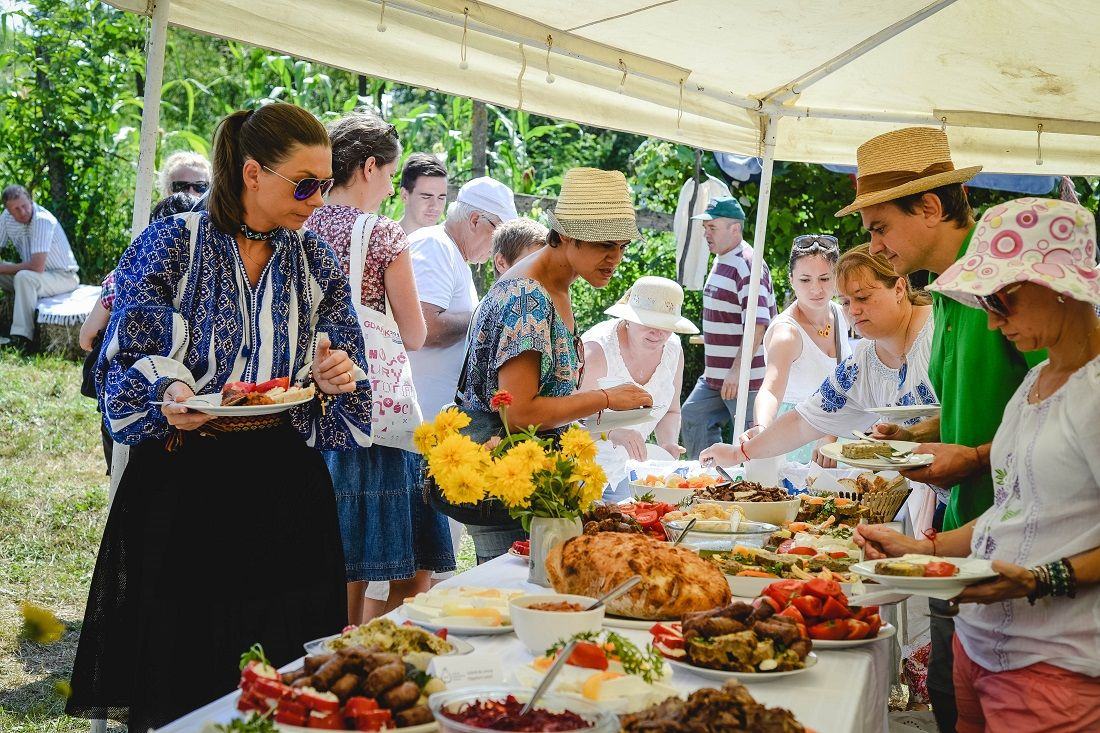
a typical Romanian feast
That's why we at Romanian Friend found & created the best Romanian food tours: you will experience a fascinating – and delicious – journey into traditional Romanian cuisine, local culture and history, learn about regional diversity, neighbouring influences and what makes Romanian food so special!
1. Introduction to Romanian cuisine
Romanian food is all about understanding our agrarian roots and how people used to plan their lives around agricultural seasons: sowing and planting, ploughing, harvesting, preserving and stocking up for winter. Religion also plays an important role in Romanians' eating habits because the Christian Orthodox calendar has numerous fasting (Lent) requirements which influenced seasonal cooking styles and dishes. To give you an idea:
- throughout May-September most dishes are based on fresh vegetables and fruits from seasonal crops and harvests, consumed raw, in salads or lightly cooked
- in late Summer - beginning of Autumn, people begin to stock up for winter by preparing jars with jams and compotes, zacusca (eggplant with vegetables paste), boulion, cured meats, matured cheese and all sorts of pickled vegetables, notably cucumbers and cabbage
- besides numerous smaler holidays, there are two 6-week long periods of Lent before Easter and Christmas when eating products of animal origin is not allowed, so delicious and creative plant or grain-based dishes become widespread; in Romanian, Lent food is called de post and is usually available throughout the year, so vegetarians will be happy
- besides vegetables, meat (ham, salami, sausages), dairy (cheese, butter, yoghurt), eggs and bread are always part of a typical Romanian meal
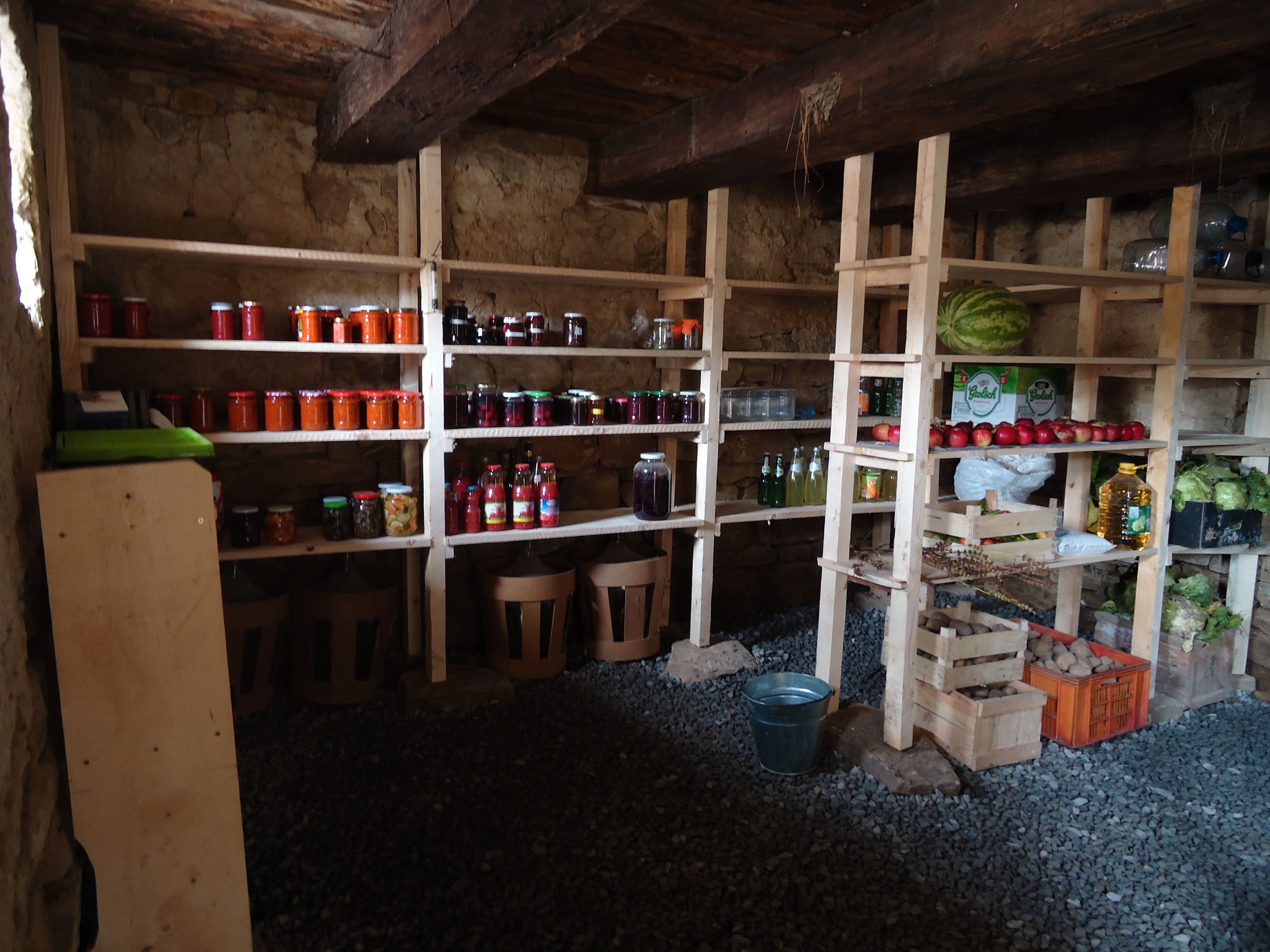
The typical pantry of a countryside farm
Besides agriculture, Romania’s rich and varied geography meant that livestock farming and hunting was an easy source of food for locals. Over time this created a fascinating and wonderful communion between nature, men and animals. Rural households were guided by a very simple principle: to make the most of, and use everything that, land and nature gives to man. A principle arising out of necessity, given the scarcity of things just decades ago, but also as a cherished reward after long periods of hard and manual labour.
Nowadays city folks may have been ‘corrupted’ into glutony by the widespread availability and abundance of food in supermarkets. In cities such as Bucharest, Brasov, Cluj-Napoca or Timisoara there are numerous restaurants to choose from, including of international cuisine, also conveniently available through home delivery. In Sibiu, there's a booming gastronomic culture with fine-dining restaurants reinterpreting traditional Romanian dishes. And, of course, there are the usual fast-food chains and the ever-present shaorma - our 'national' street food snack.
But just 30 years ago when the communist regime was in its death throes, Romanians would queue to get their ration of milk, bread and sunflower oil; meat was a rarity and grocery stores were 'stocked' with empty shelves. Young generations only hear stories about those times, but my parents vividly remember them.
Nevertheless, Romanians' appreciation for traditional food, a home-cooked meal like their grandparents used to cook hasn’t changed. Actually, most people living in countryside areas remain loyal to what their land and livestock provides, preserving the self-sustainable way of life of Romanian households and agriculture. In traditional regions such as Transylvania, Maramures or Bucovina, fancy, Western-inspired dishes are no competition for traditional dishes.
2. So what makes Romanian food so good?
Ever since our ancestors the Dacians settled these lands over 2,000 years ago, agriculture and livestock farming has been the central occupation of people living here. The great plains of Wallachia and the soft hills and pastures of Transylvania and Moldova meant that every household could have its own patch of land to work, provide food for its family and trade with others.
In economic terms, this is called 'subsistence farming' but a better word for it is self-sustainability meaning that people can live off their land. In the early 1900s around 60% of the Romanian population consited of peasants and farmers living in rural areas. In the 1930s Romania was known as Europe's granary thanks to its record production of cereals and grains.
How much land one had, the amount of work put in and the crops or stocked pantries one could boast after harvest season was the biggest reason of pride and status among villagers. Up until 1950 when agricultural lands were forcibly nationalized by the newly-installed communist regime, Romanians still used manual labour, horse-dragged carts or ploughs and centuries-old techniques to farm their land - even if it meant getting up at 6 am and working 10 hours straight every day.
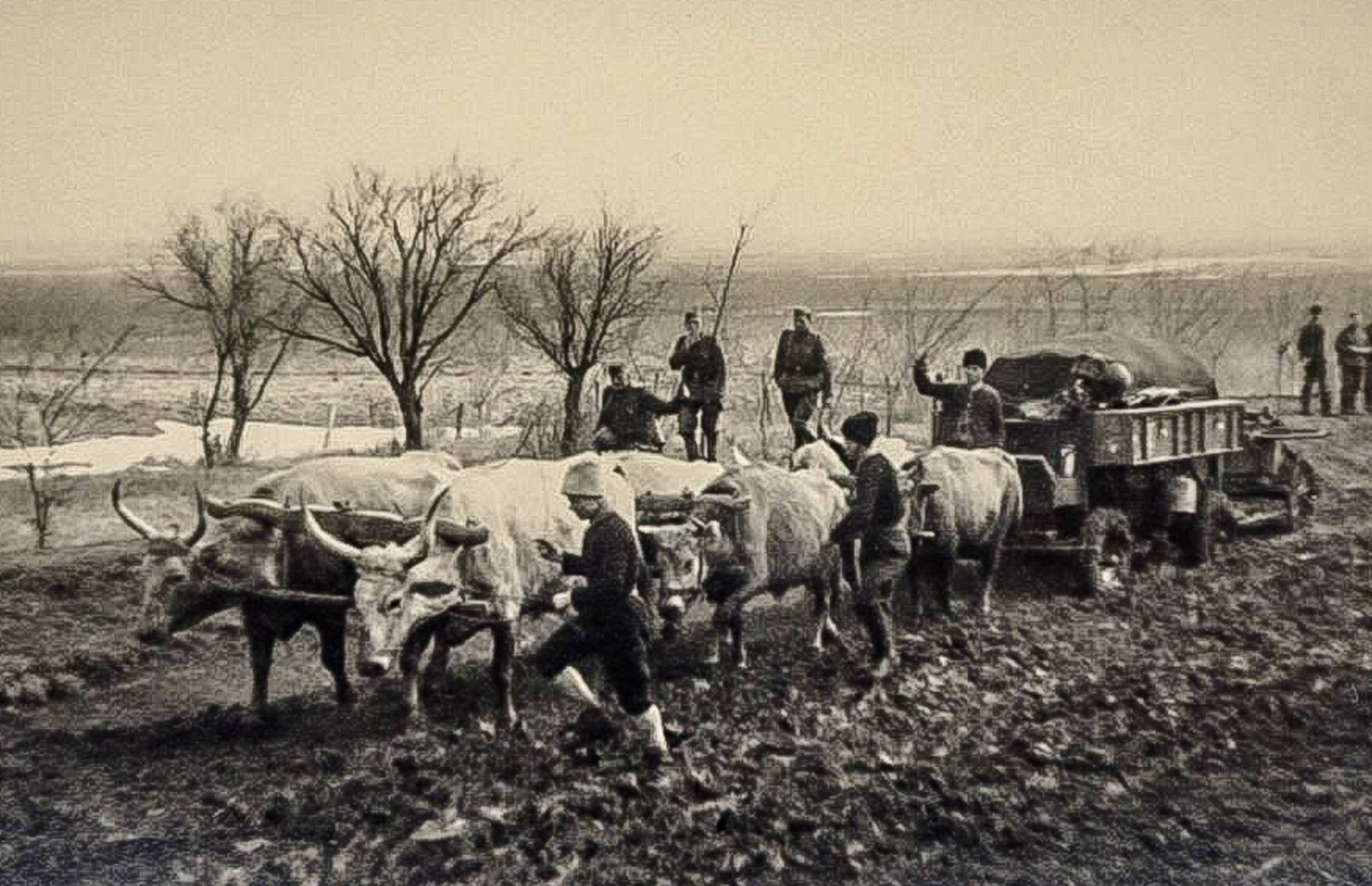
Agriculture in the 1930s
But the transition to large-scale, industrial and fertiliser-heavy agriculture worked out only partially, so most peasant families preserved their way of doing things. After 1989 when Romania returned to capitalism and private property, agriculture reverted to its fragmented, low-yield state. Begining with the 2000s, Western food companies started acquiring large patches of land and bring in modern farming techniques.
So what does this mean for you? You can still find lots of home-grown and 100% organic products from small producers with no access to large-scale farming equipment or chemical fertilisers. Food that is as natural - and tasty - as you can get, straight from local farmers. Traditional Romanian food may not be sofisticated or pretentios but it impresses through its natural, delicious taste and homemade, 'old world' quality. And tasting this organic food is one of the top reasons to visit Romania.
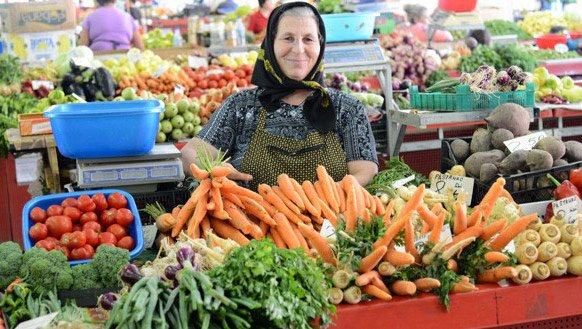
A food market in Romania
That's why if you’re visiting Romania in May-September I highly recommend you visit a food market (piață agro-alimentara) - there's at least one in every city. Large and always crowded, noisy and bustling with activity, your senses will be blown away. But, most importantly, your taste buds can rediscover the original taste of a tomato, strawbery or peach. We created our street food tours to give you a complete experience: you will visit food markets, taste seasonal products and unique regional dishes! And you won't need to eat half a day :)
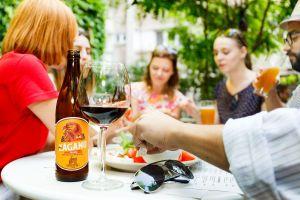
Bucharest Street Food Tour: Farmers' Markets & Hidden Streets
Start from: University Square

Cluj-Napoca Food Tour: Food Markets, Regional Dishes and Coffee Culture
Start from: Cluj-Napoca
But if you're looking for the original, peasant-style traditional Romanian food experience, you should consider visiting countryside areas where guesthouse owners pride themselves on having the best, locally-sourced or home-made ingredients and products. Visit Maramures or Transylvania's rural areas – your taste buds will be grateful!
3. Breaking bread with the neighbours
It’s also important to understand how Romanian cuisine evolved through time:
- our ancestors the Dacians, who settled these lands over 2,000 years ago, were adept hunters and skilled at preparing meat in stews, grilled or cured, alongside whatever vegetables and fruits they could find; although their recipes were unsofisticated, their feasts and wines were renowned in the region!
- with the Roman conquest (100 A.D.) placinta (pies) were introduced, along with bread, different types of cheese, cooking pots and oils; cereal agriculture also became important, especially in Wallachia’s vast and sun-bleached plains
- during the 3rd – 12th centuries, various migrating people such as Tatars, Armenians or Huns, passed and settled through parts of Romania, bringing new ingredients, cooking styles and recipes
- starting from the 1300s, influences from Byzantine, Ottoman (Oriental), Armenian, Greek and Slavic cultures make their way in Romanian cuisine: rice pilaf, moussaka, zacusca, baklava and borsch are introduced
- around mid-1800s Romanian expats schooled in Paris, Vienna or London bring home dishes of Western inspiration such as schnitzel and strudels, butter fried foods or chocolate deserts
- in the following 100 years Romanian cuisine continue to flourish under aristocratic and royal influences, but the communist regime installed in the late 1940s closed 'burgheois' restaurants and prohibited recipes that belonged to the old social order; Romanian food was brought back to its basic, peasant origins.
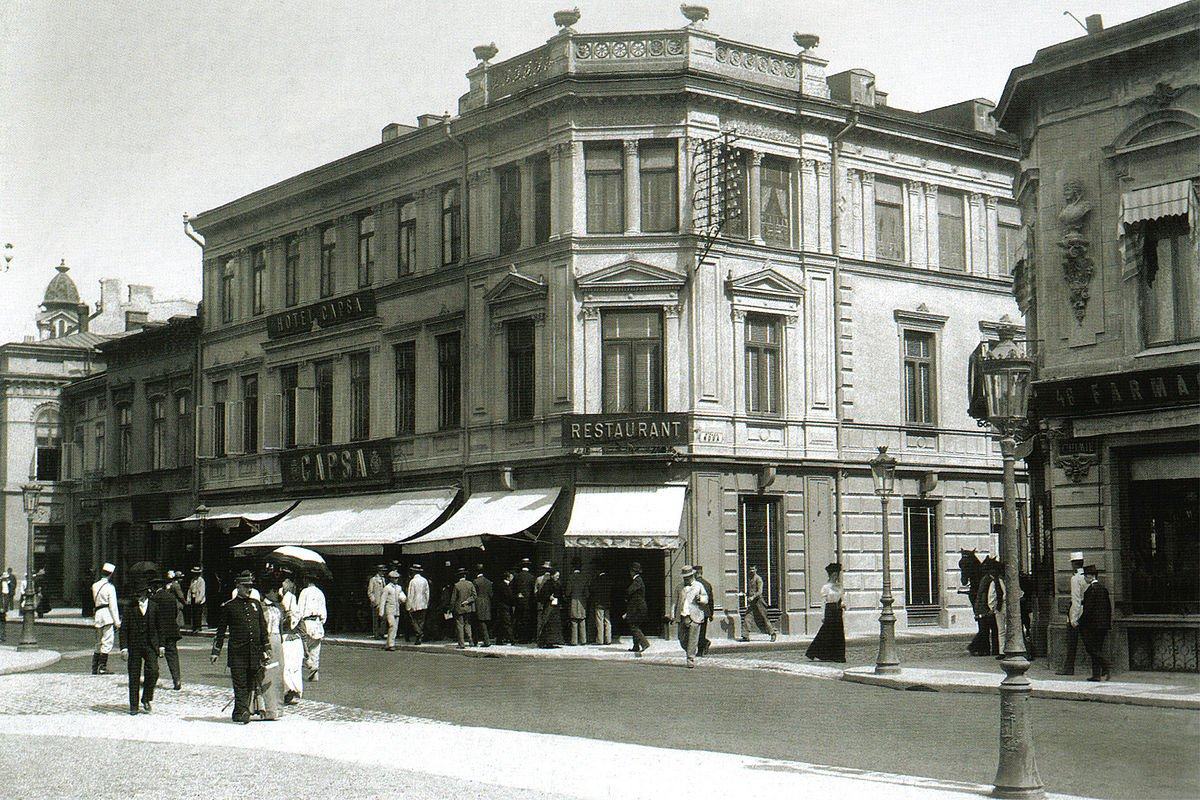
The most famous cake shop in the 1920s present even today on Calea Victoriei in Bucharest: Casa Capșa
Besides our agrarian heritage and natural farming processes, the historical and geographical aspects of living in Eastern Europe cannot be ignored. Romania, Bulgaria, Hungary and the Balkan countries share borders and pages of history in such a way that the culinary influences from Byzantine, Ottoman (Turkish), Russian or Austrian empires cannot be denied.
Transylvania was under Austrian-Hungarian rule, Wallachia was an Ottoman protectorate while Moldova was in close contact with our Russian neighbours. So it’s no surprise that many of their recipes and dishes were adapted and integrated into Romanian cuisine. As passionate about their own dishes as they are, Romanians will still enjoy their version of Hungarian goulash, Turkish shaorma, Russian borscht or Wiener schnitzel.
At the same time - the discussion of who invented what / was first at something is useless and overdone. Nationalistic pride is high in the region so it's better you steer clear of these questions unless you want to compare fairytales and historical innacuracies. In the end, we all shared, borrowed and respected our cultures over the past 1,000 years and this is how a fascinating, typical Eastern European cuisine was born.
And it’s not just about recipes – small ingredients, spices or cooking techniques were also borrowed. Travellers familiar with these parts of Europe will immediately recognise some dishes or flavours, while others will experience a surprising and delicious culinary journey!
4. Regional dishes and varieties
Speaking of geography – there are clear culinary differences between the 3 historical provinces of Transylvania, Wallachia and Moldova when it comes to certain dishes, ingredients or cooking styles, testament to their unique geography and historic influences. Some examples:
- ciorba de salata, paprika, using pork lard as as fat and recipes with fried dough are popular in Transylvania
- fasole batuta (baked beans paste) is a delicacy of Wallachia, as is ciorba de perisoare (meatball ciorba), ciulama (a kind of stew) and stuffed-then-baked vegetables
- pomana porcului, lots of garlic, pârjoale and poale-n brau (sweet cheese or gem stuffed fried dough) or ciorba radauteana are usually found in Moldova
Another interesting fact: although some Romanian dishes have a widely-accepted 'core' recipe, you will discover that each region has its own version of it. Take one of the most popular Romanian recipes: the Romanian cabbage rolls or sarmale. In Moldova you will get 6-8 rolls on the same plate with smoked bacon; in Transylvania two or three fist-sized rolls with in pickled cabbage leafs; in Wallachia you’ll get them in medium sizes served with polenta and spicy peppers. Even for Romanians it’s sometimes confusing – but the taste, though mildly different, is always good!
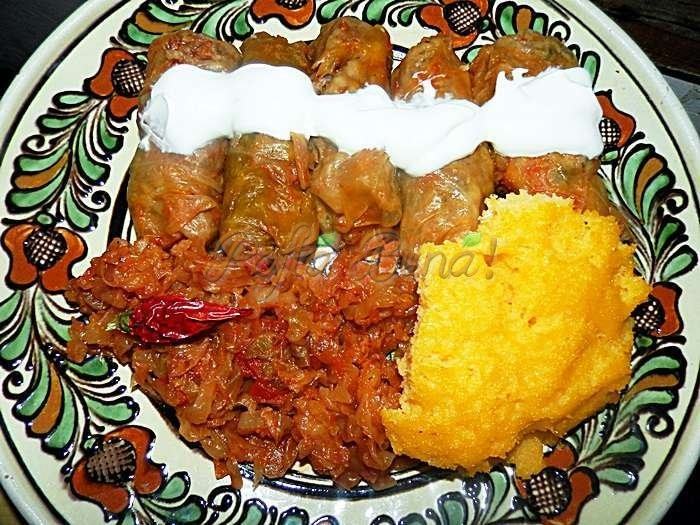
Romanian cabbage rolls
And finally, there are some culinary delicacies that can be enjoyed only in some parts of Romania, thanks to their unique combination of geography or historic influences:
- the locals around Sibiu, Sighisoara and Brasov are famous for their Saxon-inspired dishes turned Romanian culinary gems: Hanklich pies, horseradish ciorba, onion stews and fruity marmelades
- for people living close to the Danube and especially in Dobrogea and Danube Delta areas, fish is a central ingredient in their cuisine – which is rarely, if ever, used in Transylvania or Moldova. Usually cooked in stews (plachie or mancare de peste) combined with vegetables, most fish-based recipes in Romania are unlike recipes you've tried before, and are best experienced on a tour in the Danube Delta’s traditional fisherman villages
- horinca is a stronger version of tuica the Romanian national drink, found only in Maramures; smoked cheese (cascaval afumat) preserved in pine wood found only in Arges/Brasov region; alivanca is a polenta-based sweet pie, almost a delicacy, found only in the Northern parts of Moldova
So you see, there’s a lot to discover about Romanian cuisine all over the country. But now let me tell you how you can eat like a local and what dishes to try:
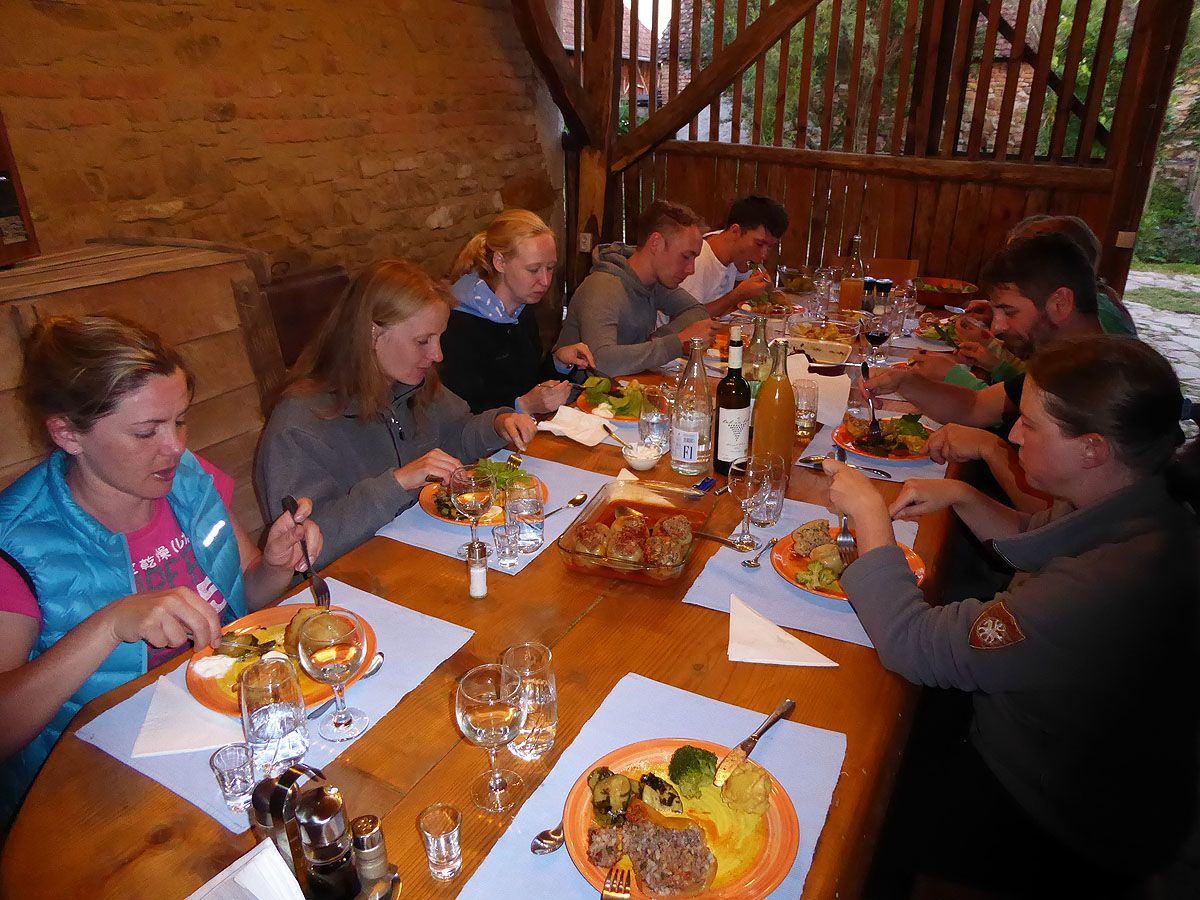
5. A typical Romanian menu
Before we get into specifics, there are several facts you should know about Romanian food and a typical meal with traditional dishes:
- portions are always big and food will be on the heavy (read: filling) side; meat, dairy and eggs are everywhere, but vegetarians should not despair
- a standard lunch consists of a ciorba as appetizer before the main dish (usually a combination of meat with potatoes, polenta or rice as a side, and a small salad); when visiting look for restaurants serving Meniul zilei (lunch menu);
- when attending an event or special dinner, expect your Romanian host to constantly invite (read: harass) you to eat more, try this or that dish, and have another drink with them; it's better if you don't eat 4-5 hours before rather than keep saying 'no, thank you' (read: I'm stuffed as a pig!)
- if Romanian food seems too much for you, start with a few sips of tuica - our national drink is a natural digestive that will work out your apetite and prepare your stomach for what's to come!
- always expect - and leave room - for Romanian desserts
- Romanian appetizers
In the past, appetizers were a rich man’s game because they could afford it and had the time to prepare it. Peasants who left at dawn to work the land, usually packed a snack (saussages, cheese, ham and vegetables) and had one hearty meal in the evening.
Eggplant salad is my favorite - try it!
Today, Romanians follow the tradition of starting out each meal with a selection of cured meats, sausages and salami assorted with various types of local cheeses: telemea (white, soft and salty) is the most popular, followed by cheese smoked in pine wood or branză de burduf (a combination of cow and sheep). Seasonal vegetables are always present but cooked vegetables in the form of pastes – fasole bătută, the delicious salata de vinete (eggplant salad) or zacusca are locals' favorites.
- The famous ciorba - a must-try dish in Romania!
Probably the most famous Romanian food, there is nothing we like more than a good ciorba - a sour broth made out of one type of meat (chicken, beef, pork meatballs) and a mix of vegetables (or just vegetables), all boiled and served steaming with bread, sour cream and spicy peppers on the side. Your stomach will be grateful :)
All restaurants will have the standard recipes on the menu (ciorba de vacuta, ciorba de pui, ciorba de perisoare, ciorba de legume) but there are some regional specialties too. Locals living along the Danube river or in the Danube Delta prepare fresh fish ciorba called plachie; in Wallachia ciorba with baked beans and smoked bacon served in a special bread called ciorba de fasole in paine is absolutely delicious; in Moldova ciorba radauteana made with chicken, carrots, sour cream and garlic is the best you can find!
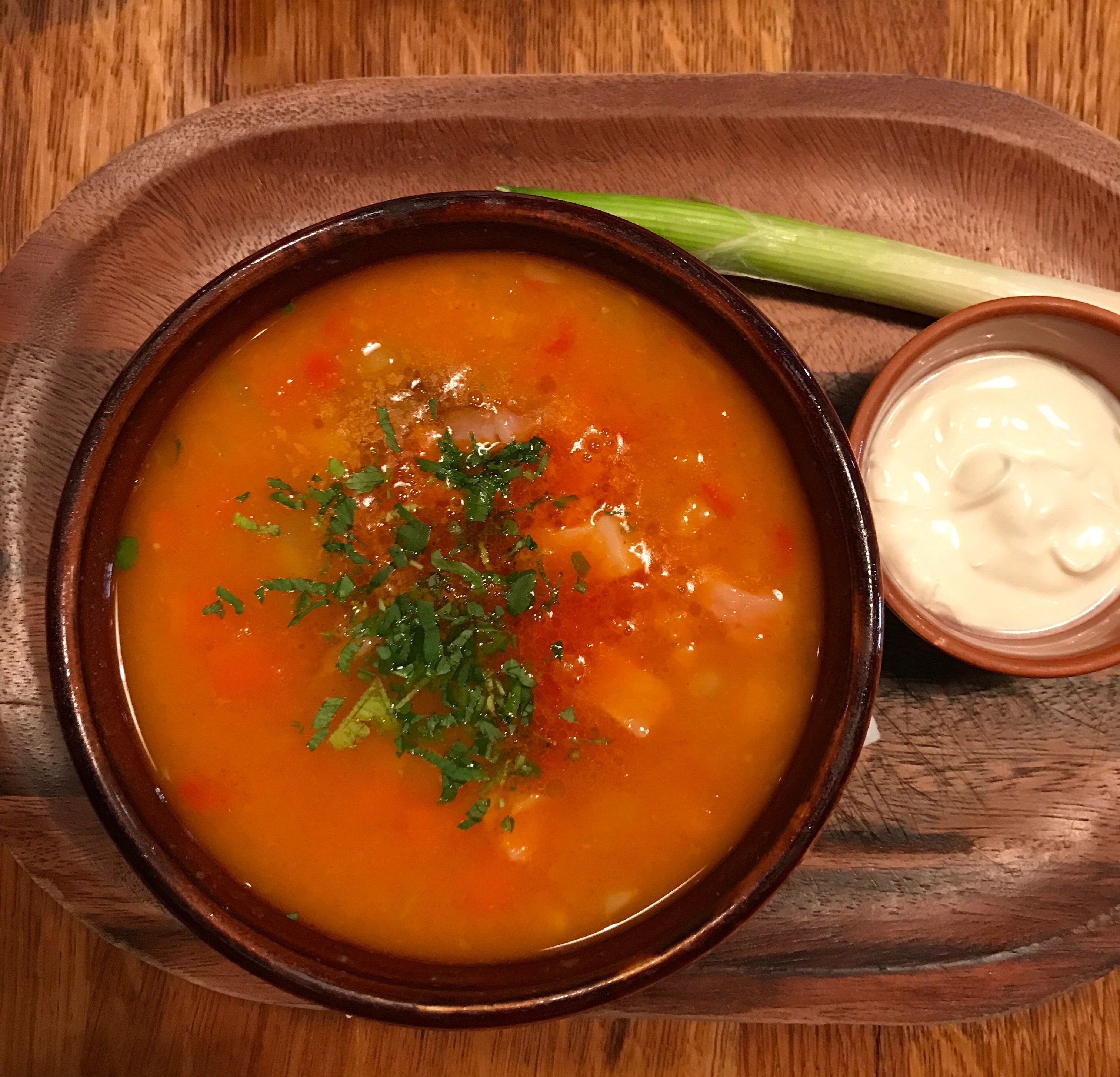
Honestly, it's the best hangover cure I've ever had. Or my go-to-dish on cold winter days. Ciorba is among our national favourites and the most typical Romanian dish you need to try when in Romania!
- Main dishes - they don't call them 'main' for nothing
Traditional Romanian main dishes are not for the faint hearted! Romanians love to sink their teeth into a juicy piece of meat - usually pork, chicken or saussages. And we're creative at cooking it too: grilled and pan-fried is common, but slow-cooked stews called tochitura are also favored. Always in combination with vegtables and thick sauces, they're the most faithful expression of our peasant inspired traditional cuisine - delicious!
A special award goes to Romanian mici - fire-grilled skinless saussages usually made out of beef and pork meat, spiced with garlic and herbs. All you need is a piece of bread and mustard, maybe some pickled cucumbers on the side - it's Romania's favorite barbecue menu!
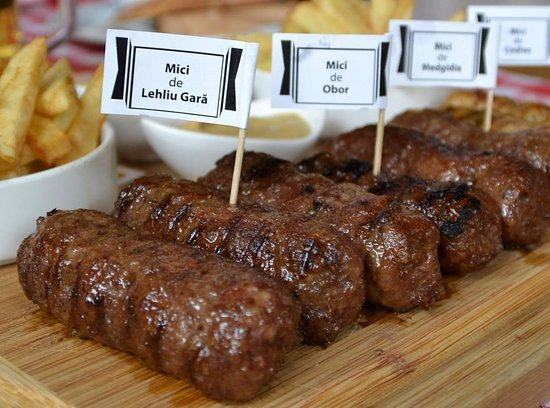
You can taste different recipes of mici at City Grill restaurant in Bucharest
Romanian food is not usually spicy and relies on garden herbs such as parsley, dill or thyme for the extra taste. Garlic is used in almost everything and even the BBC observed that we are obsessed with garlic. So we created a tour where you can taste different garlic-based dishes and understand the importance of this ingredient in Romanian cuisine. And yes, there is a connection with vampires and bad spirits :)
Boyar and upscale dishes usually favor beef, duck or game meat, exquisitely cooked with herbs, rare ingredients and wine. Mousaka and cabbage rolls are always on the menu, as are various plain dishes called mancaruri based on just one vegetable: green peas, sour cabbage, spinach or baked beans called iahnie. Good restaurants with traditional Romanian food in Bucharest are Zexe, La Copac and Lacrimi si Sfinti. There is also Caru' cu Bere but it is always packed with tourists and locals do not favor it anymore.
As for sides, it's usually potatoes cooked piuree, fried or peasant-style (lightly fried with onion and bacon) or semi-stewed rice cooked with chopped vegetables called pilaf. The almighty polenta (mămăligă) deserves a second special award thanks to its versatility: it goes with meat stews, saussages, cabbage rolls, vegetable dishes or any combination of dairy products, usually cottage chesse and sour cream. It also has its own recipe with bacon, cheese and fried egg on top - a mouth-watering sight called bulz - see below:
Vegetarians should not despair and let me give you the biggest tip you need for surviving the Romanian animal-heavy cuisine: instead of asking for vegetarian dishes and getting quizical looks, just say you are fasting and want mancare de post. All of a sudden you will receive house recommendations and revered looks - check our vegeterian food guide. And since Romanians are religious people and need to fast at least 12 weeks each year, you can be sure we don't starve ourselves or eat just plain, boring and boiled vegetables!
Speaking of religious dietary requirements, check this halal food guide prepared by a travel blogger to see what your options are.
- Romanian desserts - make room!
Romanians end their meals with desserts that are just as full-bodied as the rest of our traditional dishes. Usually dough-based in various whimsical combinations with sweet cheese, fruits and jams, the resulting pies, tarts or strudels will force you to make room for them in your stomach.
A typical Romanian dessert is papanași - fried dough balls stuffed with cheese and topped with sour cream and fruit jam. Thin pancakes are another popular option stuffed with all sorts of fruity combinations and home-made jams.
But the king of all Romanian desserts is cozonac - sweet flavoured bread with stuffing (nuts, poppy, cocoa, turkish delight or a combination thereof). Usually served for Easter and Christmas, this dessert is easy to find nowadays in pastry shops and grocery stores, but it's taste will be unimpressive. That's because the secret of it lies in the hand-made dough Romanian women make even if it takes them 3-4 hours to prepare. The process is complex but the result is worth it. If you travel into rural areas such as Maramures, Bucovina or Transylvania region, especially around Easter or Christmas you might be lucky to try them!
6. Romanian national drinks: beers, wines and țuica
To brave your way through a typical Romanian meal requires ambition and a wolf's appetite. But to drink alongside Romanians you need to prepare for a full cultural conversion - and several pills the next morning, or a ciorba. As mentioned before, Romanians love to eat and drink.
With so many grilled or fried meats, beer is naturally on the table. Romanian beers you must try are Silva, Ciuc or Ursus. Timisoreana is the oldest recorded beer recipe since the 1700s and you can visit its original factory in Timisoara. Romanian craft beers have been on the rise recently with the young and hip crowds looking for something else: Nenea Iancu, Zaganu, Hophead, Ground Zero or Gambrinus.
Wine lovers will be happy too: Romania is the sixth wine producer in Europe, a title earned by the many varieties of grapes that grow here thanks to our ideal geographical conditions - check the complete list on Wikipedia. Romanian wines you need to try are Jidvei, Cotnari, Murfatlar, Recas, Tohani or Beciul Domnesc to name the most common, Lacerta, Alira, Davino, Oprisor or Serve if you're looking for something premium. Read this introduction to Romanian wines to get a better idea!
Another thing worth mentioning is that in the last 10 years specialty coffee culture boomed in Romania. Using the tastiest coffee beans from all over the world and the best equipment in the industry, young entrepreneurs opened numerous specialty cafes all over the country serving delicious coffee. Check our list with the best coffee shops in Bucharest, Cluj-Napoca, Brasov, Sibiu or Timisoara to try one!
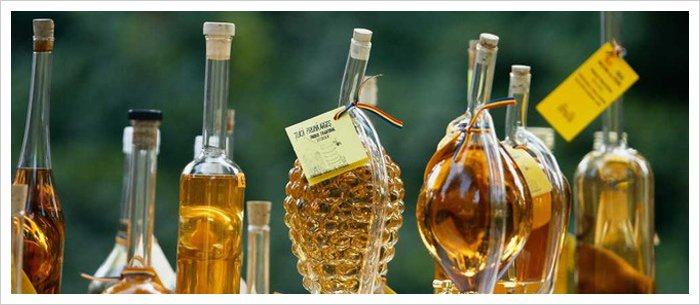
And, finally, every Romanian household takes great pride in having, making or knowing someone with the best tuica, always presented as 'the best in the country'. The Romanian national drink is made out of one type of fermented fruit (plums, pears or apples) combined with dystilled alcohol, reaching 35% in volume. Similar to rakia or schnaps in the region, tuica is drank in shots or sips before a Romanian meal starts and you can never get away with having just one. Apparently, there is something about this drink that asks for seconds and thirds. Or so hosts always say.
- Romanian Friend tip: when asked to drink tuica it's not polite to refuse, even if you have just a sip; to make it easier - don't smell it, inhale, drink and exhale. Repeat :)
You might also hear about pălinca as a Romanian national drink - it's like tuica but stronger (45-60%) and usually found in Transylvania. Horincă is the strongest (60-70%) and brewed only in the region of Maramures. Alcohool is also combined with sour cherries or wild blueberries and the resulting vișinată or afinată is very pleasant but will get you drunk quite fast.
One thing is for sure - good quality Romanian spirits are always natural, meaning that you won't have headackes the next day, and are good digestives.
***
Well, that's it folks - I don't know about you but talking - and seeing - so much about traditional Romanian food made me hungry! With so many things to do in Romania you're going to need lots of food and energy to visit our country! :)
Your Romanian Friend
Doriana
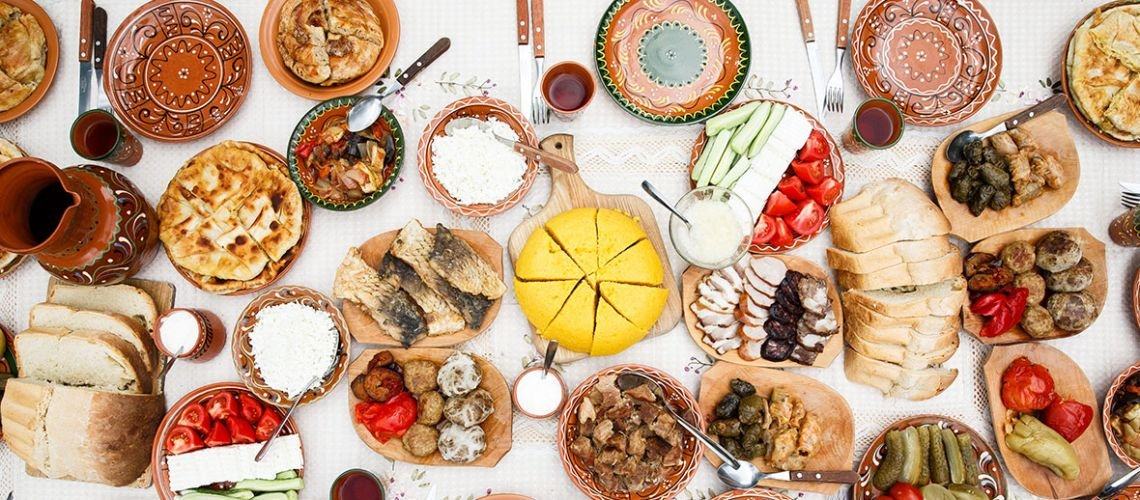
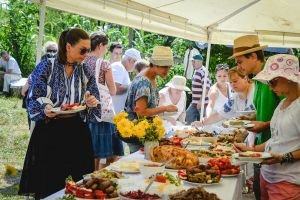
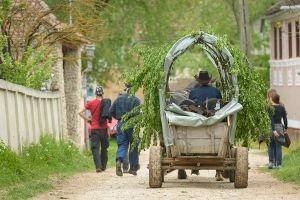
-frontend-thumbnail.jpeg)
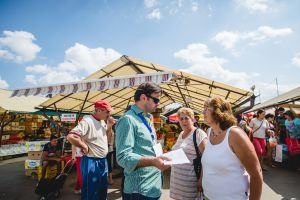
_1-frontend-thumbnail.jpeg)
